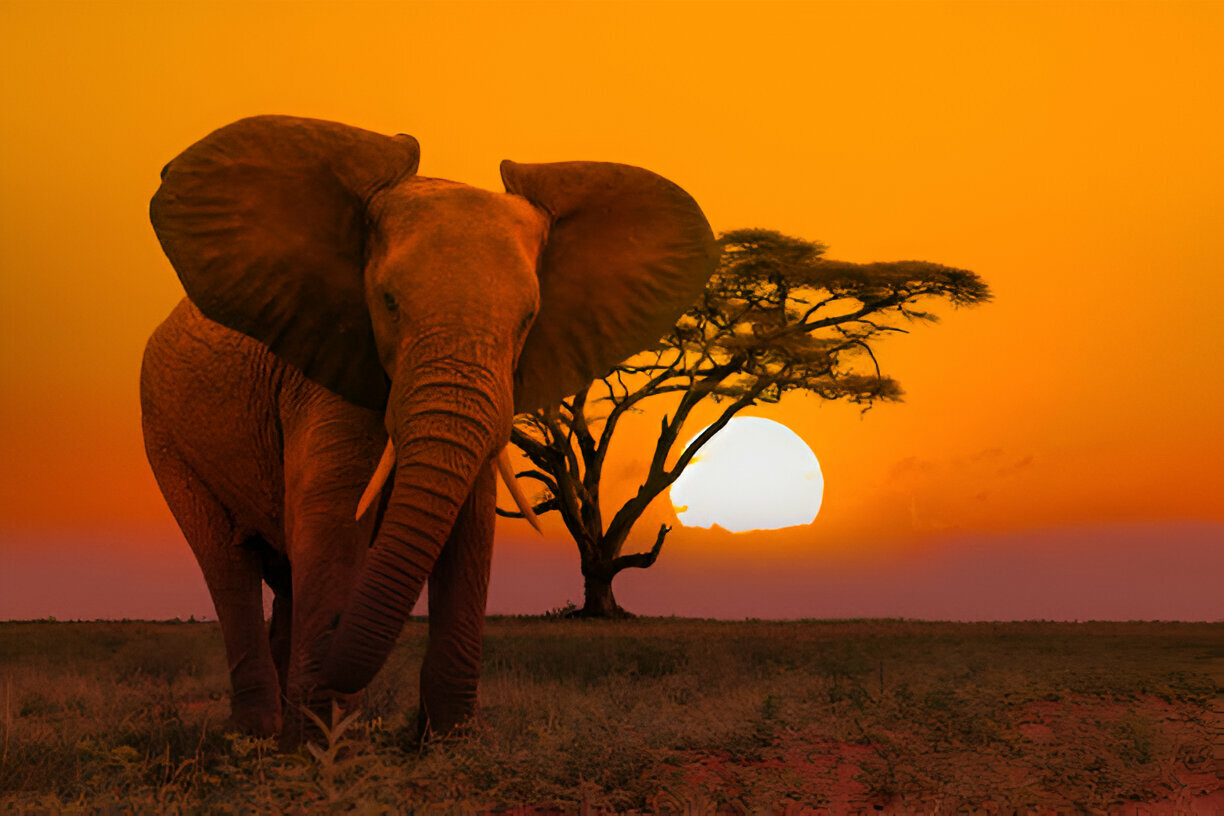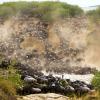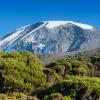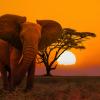Wildlife in Tanzania
Tanzania is one of the most popular wildlife destinations in Africa, renowned for its national parks, game reserves, and diverse ecosystems that support a wide variety of species. It is home to some of the most iconic and sought-after wildlife experiences, including the Big Five (lion, leopard, elephant, buffalo, and rhinoceros), as well as lesser-known species, birdlife, and marine animals.
Wildlife protection areas in Tanzania
1. National Parks
National parks in Tanzania are designated for the protection of wildlife and their habitats. They are managed by the Tanzania National Parks Authority (TANAPA) and are strictly protected for conservation purposes. Human activities like farming, logging, or permanent settlements are not allowed in these areas, although eco-tourism is permitted.
- Activities Permitted: Wildlife viewing (safaris), eco-tourism, trekking, camping.
- Examples:
- Serengeti National Park: Famous for the Great Migration and a high density of large predators like lions and cheetahs.
- Tarangire National Park: Known for its elephant herds and baobab trees.
- Ruaha National Park: One of Tanzania’s largest national parks, home to a variety of predators and large mammals.
2. Game Reserves
Game reserves are large areas designated primarily for wildlife conservation but allow regulated hunting and human activities. They are managed under different rules compared to national parks, allowing limited extractive use such as hunting under specific quotas. The goal of game reserves is to balance conservation with controlled commercial activities like hunting and tourism.
- Activities Permitted: Regulated hunting, eco-tourism, wildlife research, limited human habitation in buffer zones.
- Examples:
- Selous Game Reserve (recently renamed Nyerere National Park): One of the largest protected areas in Africa, known for its population of elephants, hippos, and wild dogs.
- Ugalla Game Reserve: Located in the western part of Tanzania, it is home to elephants, buffalos, and a variety of bird species.
3. Conservation Areas
Conservation areas are unique in Tanzania because they allow a combination of wildlife conservation, tourism, and human settlement. The most famous example is the Ngorongoro Conservation Area, where the Maasai people live and coexist with wildlife. These areas aim to protect both cultural heritage and biodiversity.
- Activities Permitted: Livestock grazing by indigenous people, wildlife conservation, eco-tourism, archeological and cultural site protection.
- Examples:
- Ngorongoro Conservation Area: A UNESCO World Heritage Site known for the Ngorongoro Crater, home to a wide range of wildlife, including black rhinos and large predators like lions.
4. Wildlife Management Areas (WMAs)
Wildlife Management Areas (WMAs) are community-managed areas where local communities are given the authority to manage and benefit from wildlife resources. These areas aim to reduce human-wildlife conflict and promote sustainable use of wildlife for the benefit of local people. Communities are involved in conservation activities and are allowed to benefit from eco-tourism and other sustainable enterprises.
- Activities Permitted: Sustainable hunting, eco-tourism, conservation activities, regulated resource use by local communities.
- Examples:
- Burunge WMA: Located near Tarangire National Park, it is managed by local communities and offers eco-tourism opportunities while protecting wildlife.
- Enduement WMA: Located near Mount Kilimanjaro, it is home to elephants and other large mammals.
5. Forest Reserves
Forest reserves are protected areas focused on conserving forest ecosystems and biodiversity. Some of these areas are also important habitats for wildlife. Activities in these areas are regulated to prevent deforestation and degradation of ecosystems.
- Activities Permitted: Limited logging, eco-tourism, forest conservation activities, regulated collection of non-timber forest products.
- Examples:
- Amani Nature Reserve: Located in the Eastern Arc Mountains, it is a biodiversity hotspot for endemic plants and animals, including several rare species of birds and primates.
- Udzungwa Mountains National Park: Known for its rich forest ecosystems and endemic species, including rare primates.
6. Marine Parks and Reserves
Marine parks and reserves in Tanzania are designed to protect marine ecosystems, including coral reefs, mangroves, and seagrass beds. These areas are managed to conserve marine life while allowing sustainable use of marine resources such as fishing and tourism.
- Activities Permitted: Sustainable fishing, eco-tourism, snorkeling, diving, marine research.
- Examples:
- Mafia Island Marine Park: Known for its coral reefs, whale sharks, and rich marine biodiversity.
- Mnemba Island Marine Reserve: A popular diving and snorkeling destination off the coast of Zanzibar, known for its pristine coral reefs.
7. Biosphere Reserves
These areas aim to reconcile biodiversity conservation with sustainable development. They often consist of core protected areas, buffer zones, and transition zones where human activities are allowed in a sustainable manner.
- Activities Permitted: Conservation, research, sustainable agriculture, eco-tourism.
- Examples:
- Eastern Arc Mountains: These mountains are globally recognized for their biodiversity, including endemic species of plants and animals.
- Kilimanjaro Biosphere Reserve: Protects the ecosystems of Mount Kilimanjaro and supports local livelihoods through sustainable activities.
These areas are vital for the preservation of the country’s rich natural heritage, supporting Tanzania's reputation as one of the world’s premier wildlife destinations.
The best time for wildlife viewing in Tanzania depends on the type of experience you're seeking. Generally, the dry season offers the best opportunities, as wildlife congregates near water sources and is easier to spot.
Best time for wildlife viewing
1. General Wildlife Viewing (Dry Season)
The dry season (June to October) is the prime time for wildlife safaris in most of Tanzania’s national parks. During this period, the weather is dry, and animals are drawn to permanent water sources like rivers and lakes, making it easier to see them in large numbers. The lack of dense vegetation also improves visibility.
- Best Parks: Serengeti, Tarangire, Selous, Ngorongoro Crater.
- Notable Animals: Elephants, lions, leopards, giraffes, zebras, buffaloes, and cheetahs.
2. The Great Migration (June to October)
The Great Migration of wildebeest and zebras in the Serengeti is one of the most spectacular wildlife events on the planet. The timing of the migration can vary slightly from year to year, but it generally follows this pattern:
- June to July: This is the best time to witness the wildebeest crossing the Grumeti River in the Western Serengeti.
- August to October: This is when the wildebeest cross the Mara River in the northern Serengeti, heading towards Kenya’s Maasai Mara.
3. Birdwatching (Wet Season)
The wet season (November to May) is the best time for birdwatching, as migratory birds arrive from Europe and Asia. The landscape is lush and green, and many animals give birth during this time, providing a good opportunity to see newborns.
- Best Parks: Lake Manyara, Selous, Ruaha, Ngorongoro Crater.
- Notable Birds: Flamingos, hornbills, fish eagles, ostriches, and migratory species like the Eurasian roller.
4. Calving Season (January to February)
The calving season takes place in the southern Serengeti, primarily around January and February. During this period, wildebeest give birth to thousands of calves over a short span of time, attracting predators like lions, cheetahs, and hyenas.
- Best Parks: Serengeti (Ndutu region), Ngorongoro Conservation Area.
- Notable Animals: Wildebeest calves, lions, cheetahs, hyenas, and jackals.
5. Elephant Viewing in Tarangire (June to October)
Tarangire National Park is known for its large herds of elephants, which are particularly visible during the dry season as they gather around the Tarangire River. The dry season also makes it easier to spot other animals like zebras, giraffes, and buffaloes.
- Best Time: June to October.
- Notable Animals: Elephants, zebras, giraffes, lions.
6. Marine Wildlife (Year-Round)
For marine wildlife experiences, such as seeing whale sharks or dolphins, certain months offer better opportunities:
- Whale Sharks: The best time to see whale sharks near Mafia Island is from October to February.
- Dolphins: Dolphins can be seen year-round near Zanzibar
- Sea Turtles: Nesting season for sea turtles in Zanzibar occurs from March to July.
7. Chimpanzee Trekking in Gombe and Mahale (Dry Season)
For those interested in chimpanzee trekking, the best time to visit Gombe Stream or Mahale Mountains National Parks is during the dry season. This is when chimpanzees are easier to track as they stay closer to the forest paths.
- Best Time: July to October.
- Notable Animals: Chimpanzees, red colobus monkeys, and other primates.
Each season offers unique wildlife experiences in Tanzania, making it a top destination for nature lovers year-round. However, if your priority is large mammals and the Great Migration, the dry season from June to October is the ideal time to visit.




